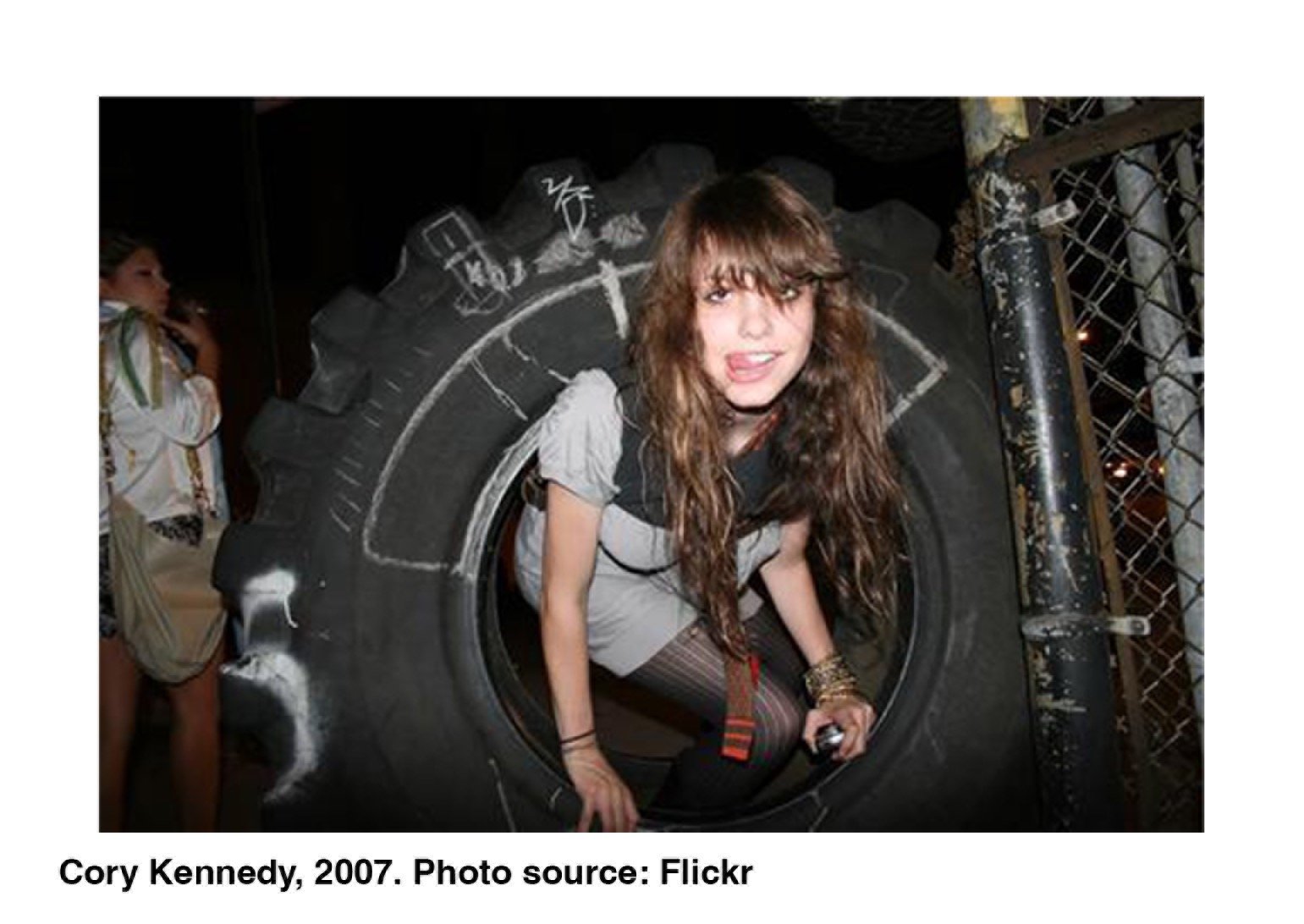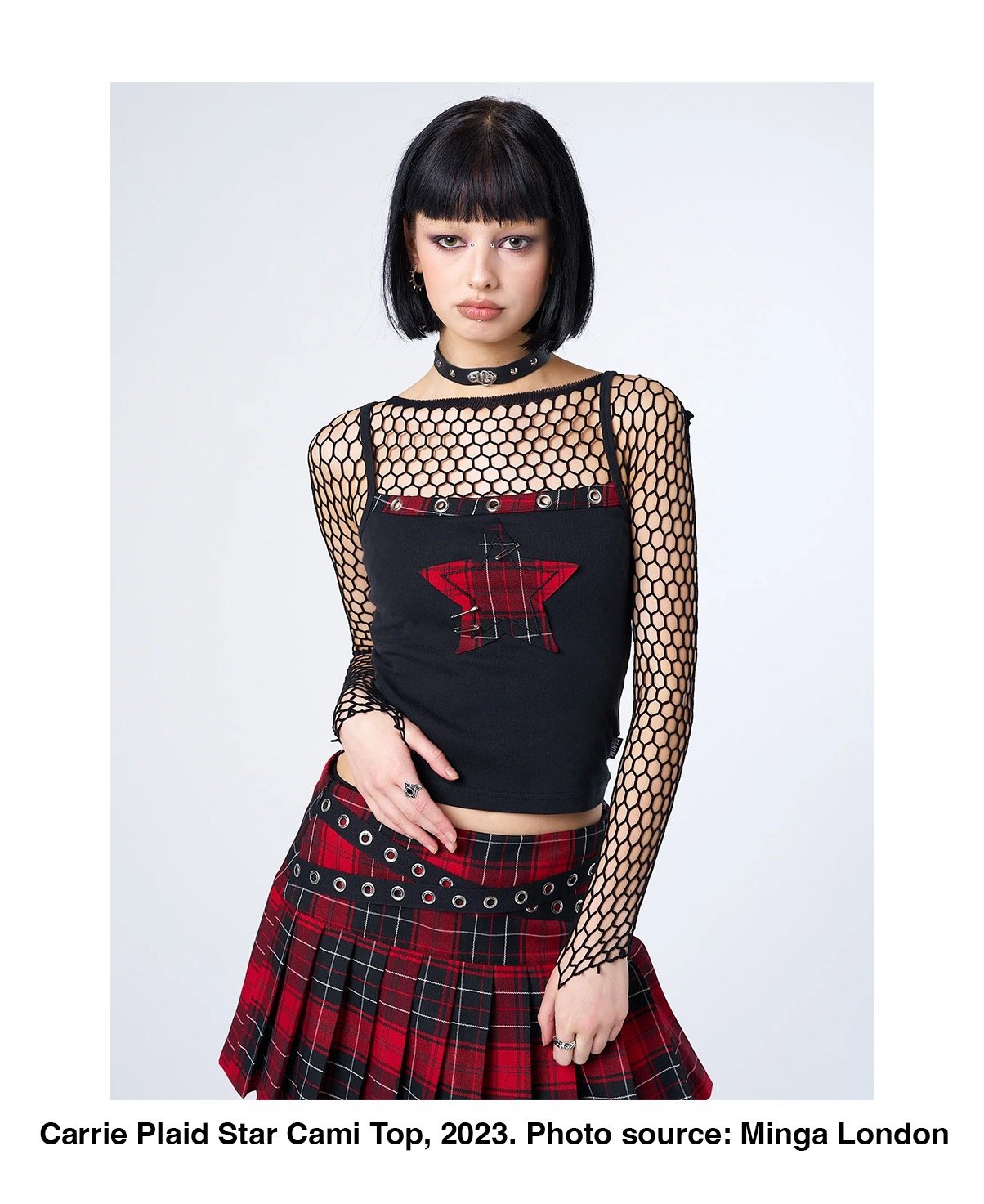Economics, Eating Disorders, Esotericism, oh my!: A Brief History of Indie Sleaze
The year is 2010. It’s Friday night. You’re a B-list celebrity whose career partially relies on consistent party-going. Your Nokia is blowing up and you’re becoming overwhelmed between answering text messages in excessive shorthand and choosing among several brightly colored tights to go with your tiny, low-slung, cheetah print shorts. The texts are from your friends, already at a club downtown, notifying you that you’re late, missing the fun, your old hook-up is there, and they’ve scored MDMA and if you don’t get down there fast it’ll be gone. You select a red pair of tights that compliments the cheetah print well, rub black stuff over your eyes, and hop in a taxi, hoping that tonight is the night you’ll finally become the star of a well-known party photographer’s blog.
For a short span of time, this was the reality of internet celebrities, B-listers, and posers alike, who all hoped for not only their fifteen seconds of fame, but also a night they’d never forget.
As defined by the esteemed source Urban Dictionary, “indie sleaze” refers to a “style of smudged black eye makeup, messy hair, tights, furs, cigarettes and shiny things,” typically donned by chic girls in the early 2000s. User bottlerocket02 notes that, while there are certain overlaps between the Indie Sleaze girl and the Tumblr girl, they are not to be confused. As opposed to the moody, terminally online aesthetic of the Tumblr girl, Indie Sleaze culture surpassed the screen and moved to the dance floor. The culture was based around endless partying and infinitely long nights. Youthful partiers dressed, danced, and posted with the confidence that they would never age and never grow out of living it up. The photos that emerged from this time created the persona of Indie Sleaze, and were introspective, self-deprecating, existential, and most importantly, satirical. In some ways, the culture was meant to mock the mundanity of adult life and further distance the youth from the depressing lives of their parents, who just didn’t understand, and in others, the movement simply sought to exist outside of time, frozen by the camera.
Over the course of this article I will attempt to explain the emergence, downfall, and future of Indie Sleaze, though it should be said that my narrative is not at all an all-inclusive history. Certain icons, moments in pop culture history, or elements of the aesthetic may have been omitted with word count in mind. Although I hope to make this message clear over the course of this article, I want to note that this is not meant to promote dressing in one way or another nor definitively label what is or is not Indie Sleaze, but rather introduce readers to the history of the aesthetic and open their minds.
The Birth of Indie Sleaze
While many of the fashion influences of Indie Sleaze were relics from the 80s and 90s, the culture formed in a direct response to the stock market crash of 2008. At a time of hopelessness, the youth coped with the stress through escapism; dressing quirkily, partying, and ironically adopting antiquated mannerisms allowed them to forget about unemployment, debt, and the housing crisis, all of which were plaguing older generations.
Aiding in the spread of the Indie Sleaze trend was the growing popularity of social media. Facebook, Tumblr, and MySpace allowed for connectivity, as well as the possibility of becoming an internet celebrity.
Influencers are not a new phenomenon; at this time, icons like Cory Kennedy, Sky Ferreira, Alexa Chung, and legendary party photographer Mark Hunter ruled the internet. Young adults waited in anticipation of Hunter’s next drop, which often featured pop singers and celebrities, fashionistas, and hipsters. As noted on his website, The Cobrasnake, Hunter was the “definitive photographer of alternative contemporary culture.” Through his photos, viewers had a glimpse into the wild lives of professional partiers and could mimic the styles they saw on their favorite celebs.
In an effort to be as individual and unique as possible, Indie Sleaze became an amalgamation of vintage silhouettes and patterns, skinny jeans, graphic tees, and maximalism. The stars of The Cobrasnake were sultry and fluid, posed like models in brands like American Apparel and ASOS, and draped themselves in furs, heavy jewelry, metallics, and mesh.
Though “performatively vintage,” contemporary brands were attainable at reasonable prices, like American Apparel, the champion of the pleated mini-skirt and thigh-highs. In this sense, Indie Sleaze, although composed of grungy ‘90s elements and intense ‘80s motifs, bordered on Hipster, which brings to mind the ironic slogan tees and impossibly skinny jeans that arose from this movement. In this sense, Indie Sleaze, although composed of grungy ‘90s elements and intense ‘80s motifs, bordered on Hipster, which brings to mind the ironic slogan tees and impossibly skinny jeans that arose from this movement.
Though the styles for men were relatively simple and less inspired than women’s, in music they thrived. Bands like The Strokes, MGMT, and the Arctic Monkeys were incredibly popular; however female singers were well liked, including M.I.A., Sky Ferreira, and Uffie, to name a few.
In its time, Indie Sleaze boasted a lively culture that involved the internet, art, fashion, and music. Stemming from the financial crisis, the aesthetic had a strong foundation in the common desire to escape the depressing nature of current events and to be individualistic. The combination of a unique style and an existence that relied on parties and internet presence limited the amount of people who not only could enjoy Indie Sleaze, but also access it. Although gatekeeping allowed for the aesthetic to thrive internally, it is that which led to its downfall.
The Death of Indie Sleaze
While it is unclear whether there was a particular reason for the end of Indie Sleaze, I have several theories. Of these speculations, the most prominent is lack of diversity. Indie Sleaze “died” around 2012, at a time when popular media was being criticized for mainly focusing on white, thin, hetero people. Indie Sleaze was guilty of this: with the exception of American Apparel models, the big names of Indie Sleaze were mainly white and thin. Social media accounts, often associated with the aesthetic, were called out for posting pro-ana (promotion of anorexia) content, as well as promoting unhealthily thin bodies. Our culture no longer celebrated heroin chic, and was instead interested in representation via models that came in different shapes and sizes. Indie Sleaze felt outdated and longer in line with societal values.
Another possible cause was the emergence of a cleaner, more put-together aesthetic. Pop began sounding more poppy, less alternative. Partygoers grew up and were no longer interested in going out every night. Unconventional, edgier fashion gave way to dressing like an art teacher (twee, think Zooey Deschanel), expensive sports- and lounge-wear, and cleaner silhouettes. Young adults who previously identified with Indie Sleaze desired a more professional look, becoming more mainstream and casting aside their alternative pasts.
A final, less likely hypothesis is economic growth. Despite Indie Sleaze growing in response to the Great Recession, many of its participants were young adults who were mostly unaffected by it but may have benefited from the prosperity of the 2010s. In a PBS interview conducted by Jeffrey Brown, David Wessel, a social science researcher, explains that unemployment, inflation, and interest rates were low in the early 2010s, yet while more people were employed, wealth inequality, debt, and the price of living was increasing. Many millennials did not reap the benefits of the economic upturn, instead taking out loans and continuing to rent well into adulthood. The ongoing inaccessibility of financial stability raises doubts about an economic boom being a cause of the deterioration of Indie Sleaze.
The Indie Sleaze Revival
You may be asking, what’s the point of writing an article about Indie Sleaze if it’s over? Simple answer: it’s not. As we know from the so-called TikTok fashion forecasters, trends are cyclical. In the past few years, we have experienced a Y2K resurgence, the Boho renaissance, and most importantly, a 90s grunge rebirth. Riding on grunge’s tattered coattails is Indie Sleaze, appearing just in time to counter anxieties about our cloudy future.
Growing from an increased interest in thrifting and stepping away from the mainstream, the Indie Sleaze revival has been adopted by young adults across the world. Major brands have recognized its potential and it can now be spotted on the runway and the websites of ready-to-wear labels. But here’s the rub: in this reincarnation of an aesthetic that has caused harm in the past, how do we reinterpret it to be inclusive and sustainable?
Recently, the brands Jaded London and Minga London have dropped Indie Sleaze-themed collections with inclusive sizing, but fall short in the modeling department. Jaded London’s Sleazenation, which appropriates American Apparel’s classic Helvetica Black font, features printed baby tees, layered tees, and oversized hoodies worn by three white, slender models.
The cheapest item is the Ibiza Passion cushion cover, priced at $33. Minga London’s SLEAZE R!OT collection is grungier, encapsulated by a black and red color palette, stripes, silver jewelry, and oversized denim and knitwear. The only modeling difference is that instead of three white, slender models, we just get two.
The diversity issue is not the only problem here; Indie Sleaze, an easily thriftable aesthetic that brings up thousands of results on Depop and other reselling websites, is being repackaged and sold at unreasonable prices by brands with unsatisfactory sustainability ratings. The website good on you, ranks Jaded insufficiently sustainable and considers Minga’s efforts towards sustainability as “a start.” Despite the price tag, both brands utilize factories overseas to mass produce clothing for cheap.
So, if we have access to every single style imaginable, from any time period, at our fingertips, how do we not abuse this and how do we avoid the problems that occurred the first time around? Fast fashion and personalized ads make it easy to shop trends, though are harmful to the environment and workers, who are often underpaid. The inclusion of diverse models has been slow to come about and many brands are still lagging behind. Even with the constant preaching about the necessity of diversity, the most popular influencers wearing Indie Sleaze are often thin and white. It’s depressing to think that in the decade after Indie Sleaze, its flaws have been ostensibly combatted but remain generally unsolved; although this doesn’t mean that there isn’t hope. It’s my belief that solutions lie in consumers taking action. This means boycotting and emailing brands to ask about their sustainability and diversification efforts. This means attempting to shop secondhand and from sustainable brands when possible. This means promoting diverse influencers and models. With all of our resources and knowledge of the negative impacts of unsustainable clothing and homogenous fashion icons, it is imperative for the success of the Indie Sleaze rebirth that we counter them with action.
In this brief history of Indie Sleaze, we have seen the days of the flip phone and blogging reemerge as a fascination with agelessness and alternative culture. From its birth in the early 2000s to its current revival, Indie Sleaze has always been a symbol for resisting adulthood and by assiociation, anxieties of the uncertain future of our world. This current rendition of Indie Sleaze is plagued by the same diversity issues of the past, with its lack of sustainability depleting its potential as an outlet for existential anxieties. Nevertheless, solutions are in sight and perhaps enough to counteract its failings. With this in mind, smudge your eyeliner, don your cheetah print micro shorts, and in the words of Uffie, make your sleazy dreams come true.





